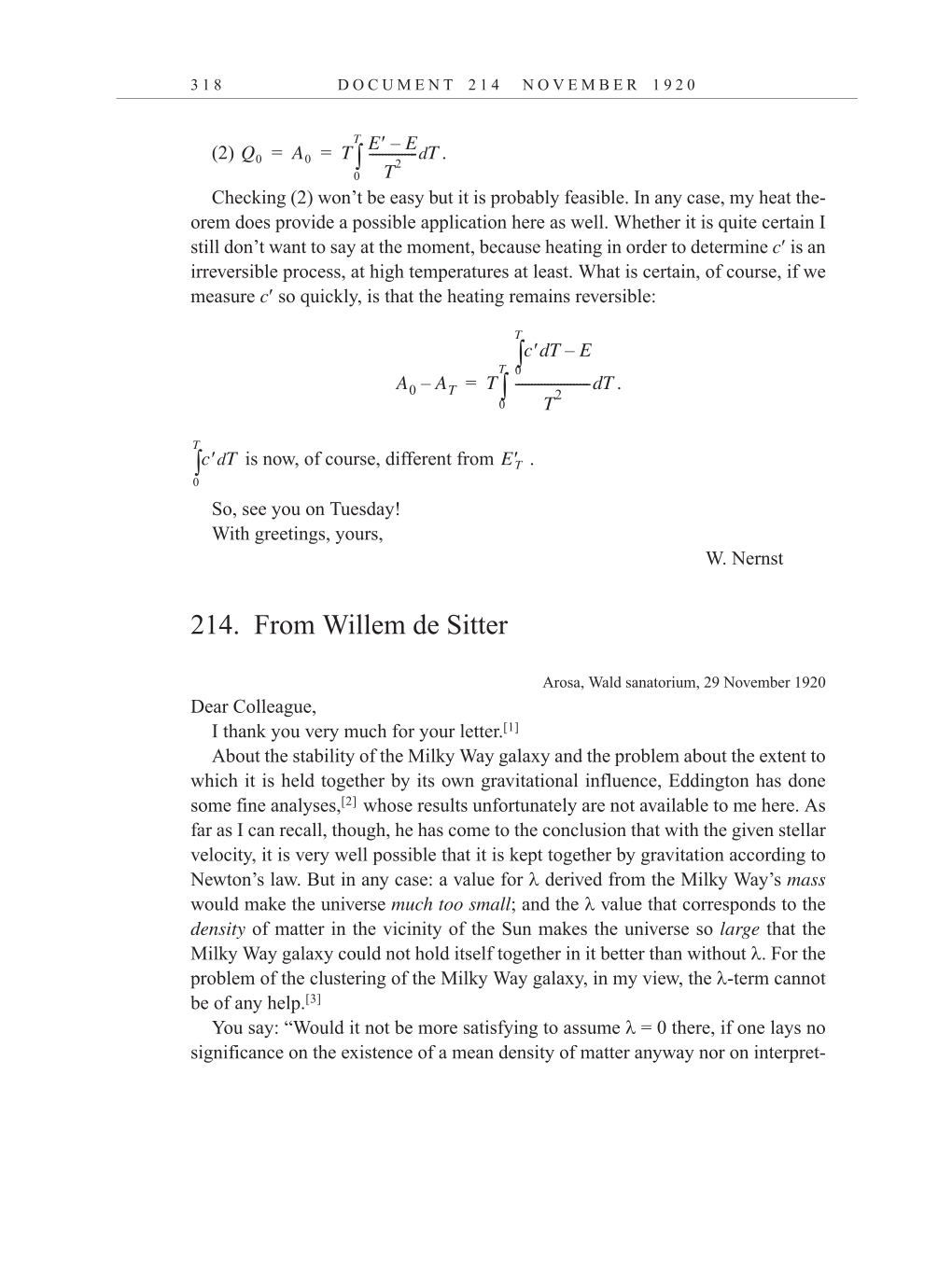3 1 8 D O C U M E N T 2 1 4 N O V E M B E R 1 9 2 0
(2) .
Checking (2) won’t be easy but it is probably feasible. In any case, my heat the-
orem does provide a possible application here as well. Whether it is quite certain I
still don’t want to say at the moment, because heating in order to determine c is an
irreversible process, at high temperatures at least. What is certain, of course, if we
measure c so quickly, is that the heating remains reversible:
.
is now, of course, different from .
So, see you on Tuesday!
With greetings, yours,
W. Nernst
214. From Willem de Sitter
Arosa, Wald sanatorium, 29 November 1920
Dear Colleague,
I thank you very much for your
letter.[1]
About the stability of the Milky Way galaxy and the problem about the extent to
which it is held together by its own gravitational influence, Eddington has done
some fine
analyses,[2]
whose results unfortunately are not available to me here. As
far as I can recall, though, he has come to the conclusion that with the given stellar
velocity, it is very well possible that it is kept together by gravitation according to
Newton’s law. But in any case: a value for derived from the Milky Way’s mass
would make the universe much too small; and the value that corresponds to the
density of matter in the vicinity of the Sun makes the universe so large that the
Milky Way galaxy could not hold itself together in it better than without . For the
problem of the clustering of the Milky Way galaxy, in my view, the -term cannot
be of any
help.[3]
You say: “Would it not be more satisfying to assume = 0 there, if one lays no
significance on the existence of a mean density of matter anyway nor on interpret-
Q0 A0 T
E E –
T2
--------------dT -
0
T
= =
A0 AT – T
c T d E –
0
T
T2
----------------------- Td
0
T
=
c dT
0
T
E
T
